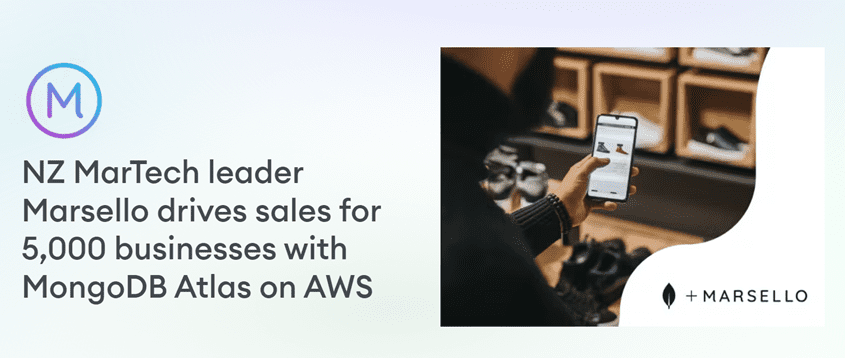
As a B2B case study writer, I’ve worked with many businesses to create compelling customer stories.
Case studies – also called customer success stories – are a way to show how your products or services work in the real world without being too pushy. In most situations, case studies are used in B2B marketing as opposed to B2C marketing. Case studies can be used in many ways. Sales teams can show them to clients as part of the sales process. They can be promoted on social media platforms to spark interest and connect with new customers.
As a B2B case study writer, I’ve created business-to-business case studies for many types of businesses. Some of my first case studies for industrial products (Siemens). This included customer case studies about industrial automation, safety, manufacturing and security products. In some cases, I visited customer locations to view the solutions in action and interview the people who were using them. This included visiting the Ford Broadmeadows Assembly Plant (which closed in October 2016) to study the safety equipment and conduct interviews.
More recently, I’ve been focusing on case studies for tech companies. This has included writing SaaS case studies for MongoDB – a database management application – showing how they help businesses solve their database management challenges. A few examples include:
www.mongodb.com/customers/baemin
www.mongodb.com/customers/marsello
www.mongodb.com/customers/amar-bank
As a freelance case study writer, I’m ready to discuss your situation, ideas for case studies, and how they fit into your overall content marketing.
Give me a call on 1300 731 955 or used the contact form on this page to get in touch.
In the following article, I outline my approach to writing compelling case studies.
________________
Tips for Writing a Business Case Study
When you use a case study to promote your product or service, it’s not a ‘hard sell’ that directly explains the benefits you offer. Instead, professional case study writers show the reader how you solved a problem or met the needs of a company or person. This will enable the prospect to imagine how your solution could work for them.
The Outline for Writing a Business Case Study
A simple yet effective outline for a case study includes the:
- Background and introduction of the problem
- Solution – show how it was chosen and implemented
- Results – show how the situation has improved.
Case study introduction
In the background of the case study, you explain the customer’s problem. It’s best to show how the issue was hurting their organisation. Emphasise the pain and frustration caused by the problem, but don’t exaggerate.
For example, as a B2B case study writer, I wrote a business case study for an automation equipment provider that helped a dairy products manufacturer reduce waste when packaging yogurt. At the beginning of the case study, I explained how they were wasting 3,000 kilos of yogurt each year because their automation equipment couldn’t accurately fill the yogurt containers.
In your business case study, you might show how your client tried another product or service that didn’t help them. It’s all right to mention this, but it’s best not to give the name of the competitor. Criticising your competitors by name in your case study can be counterproductive. Also, it can result in legal problems if the competitor feels you haven’t covered the case accurately. Remember to quote management and staff from the company that you have helped. Direct quotes from clients show that your case study is genuine. It also helps the readers, who may be facing similar problems, relate to the situation.
Solution section
When writing your business case study solution section, you want to show how your product or service solved the problem – you explain the rationale for choosing a particular solution and then how the solution was implemented. This can start at the very beginning when your company first got involved. You can show how you took the time to fully understand the client’s challenge and the efforts made to complete the project successfully.
For example, when writing a business case study about an IT company that develops software for the telecommunications industry, I used a story from their experience. When developing and testing the software in Australia, they had to communicate with partners around the globe. This meant they had to spend many late nights working to get the job done. I mentioned these extraordinary efforts in the case study to show the dedication of the company’s personnel.
When writing a business case study it’s good to include these human elements, especially if you’re selling a complex service. This will take time. You’ll need to research and interview the people who were involved in implementing the solution.
Results section
The results section of your case study is where you tell the readers what the company achieved. Try to be as specific as possible. When writing the yogurt manufacturing case study mentioned earlier, I included details on what the new automation equipment achieved. It reduced spillage by 97 per cent – from 3000 kilos per year to 90 kilos per year.
As a B2B case study writer, it’s not always easy to get this amount of detail when writing a business case study. Some companies won’t have that type of information to give. Others are reluctant to give away their trade secrets. In these situations, you might want to write a business case study without specifying the customer’s details. For instance, in the case study mentioned, I didn’t name the customer but referred to them as “a major Australian manufacturer of dairy products”. Although not as effective for creating a compelling story, it fulfilled the customer’s desire to remain anonymous.
___________________________
Speak with a B2B case study writer
When it comes to case studies, writing services can help you get a high-quality result that shows how your products or services solve real-life problems.
Get in touch with me on 1300 731 955 or use the contact form on this page.

